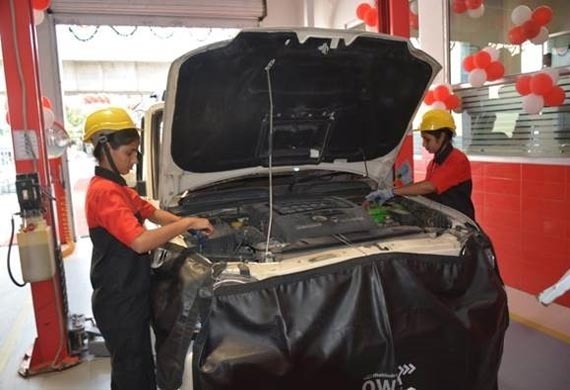
Indian Automotive Industry enroute Fixing its Gender Disparity Challenges
By: Rachita Sharma | Wednesday, 3 March 2021
A few days back tyre manufacturer Ceat announced the launch of its very first all women operated tyre shop in Bhatinda, Punjab. The company mentioned these shoppee will be completely owned, managed and operated by an all women workforce which will conduct all service-related assistance for customers, including wheel changing, balancing and operating various machinery to service a vehicle. Dressed in the company trademark blue, the team of women at the launch were oozing confidence.
The event was a step forward for promoting gender parity in the traditionally male dominated automobile sector. Amit Tolani, CMO, Ceat said, “All Women CEAT Shoppe …. allowing women to grow and make a mark in the tyre Industry, a predominantly male-driven business. The initiative will not only provide financial stability to the women but also inspire many others to join this industry.”
While gender disparity is prevalent is various industry sector, the automotive sector has been the least successful at attracting and retaining female employees. Through the women attributed this to various reasons including an unattractive environment for women (65%), a lack of work-life balance (59%), and a lack of flexible schedules (46%).
Over the past few years we have seen that the number of women in the Indian automotive industry is one of the lowest among all automotive markets, especially in core manufacturing and OEM pace.
The case is not very different across the globe as well. A study by Deloitte said that women accounted for only 27 percent of the US auto manufacturing workforce as compared to about 47 percent of the overall labor force.
The automotive industry has largely seen women enter the big league in this sector owing to familial progression. However, the number of top tier female leaders who made their way through laterals in middle/ senior level positions is extremely low.
However, it is pertinent to note that automotive players have been making strides in terms of promoting an inclusive workforce across all functions.
Last year, Mercedez Benz took the call to hire more women sales staff across our dealerships motivated by the increasing number of women customers. Tata Motors also came forward to hire over 100 women for its dealerships from college campuses for sales and service roles in 2020.
Most recently, Morris Garage India made headlines when the 50,000th MG Hector was manufactured by an all-women’s crew in Vadodara, Gujrat. The move was historic because, while women have occupied a higher inclusion rate in dealerships, yet the core technical areas have been beyond most women’s reach.
However, MG’s all women’s crew led the end-to-end production involving in panel-pressing of sheet metal and welding to painting jobs as well as carrying out post-production test runs.
The British legacy player said that the move demonstrated that glass ceilings no longer existed even in an erstwhile male-dominated industry such as automobile manufacturing. The company also announced that it intends to achieve 50 percent gender diversity in its organization in the future and pave the way for a balanced workforce.
Only time will tell if the glass ceiling has really been broken, however, the moment was one of pride and joy.






